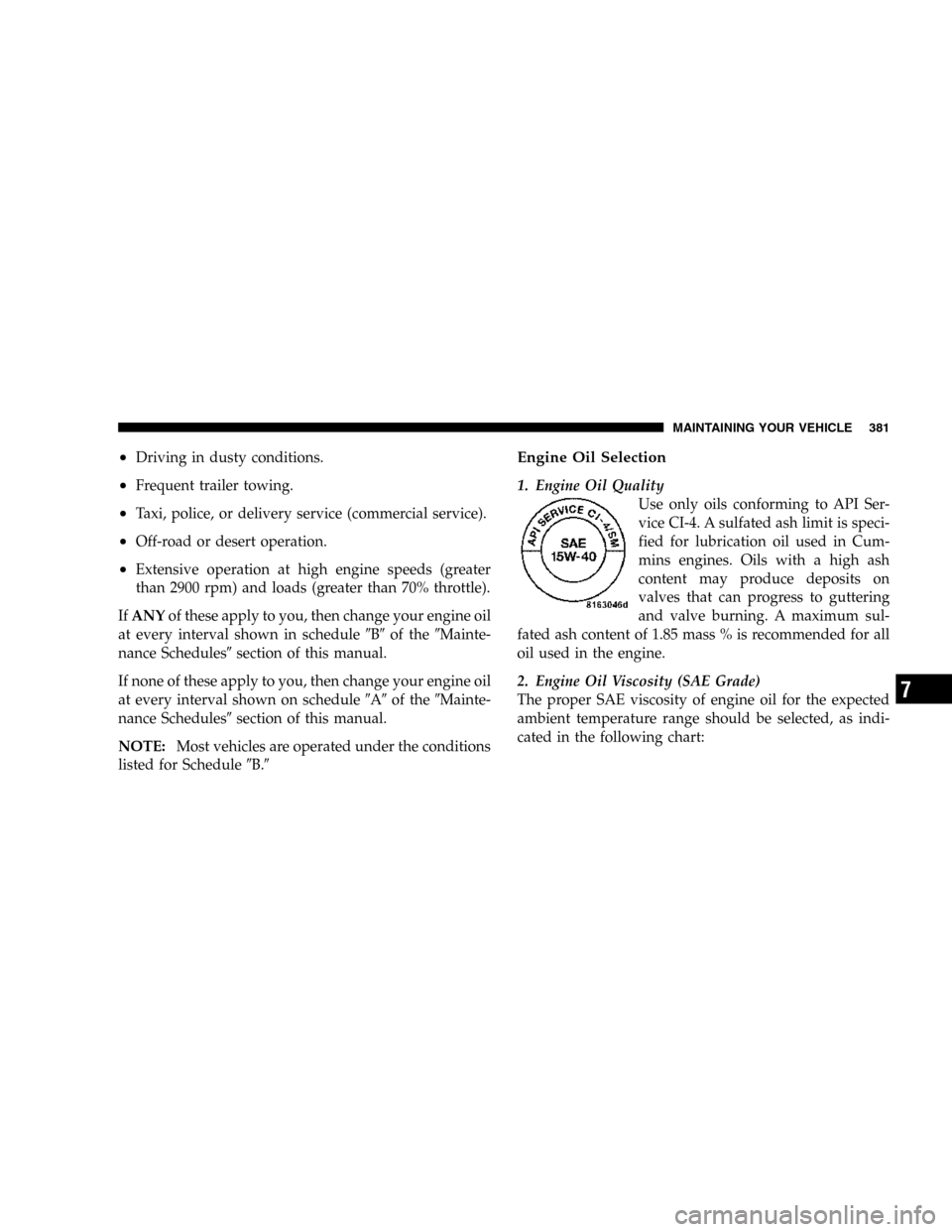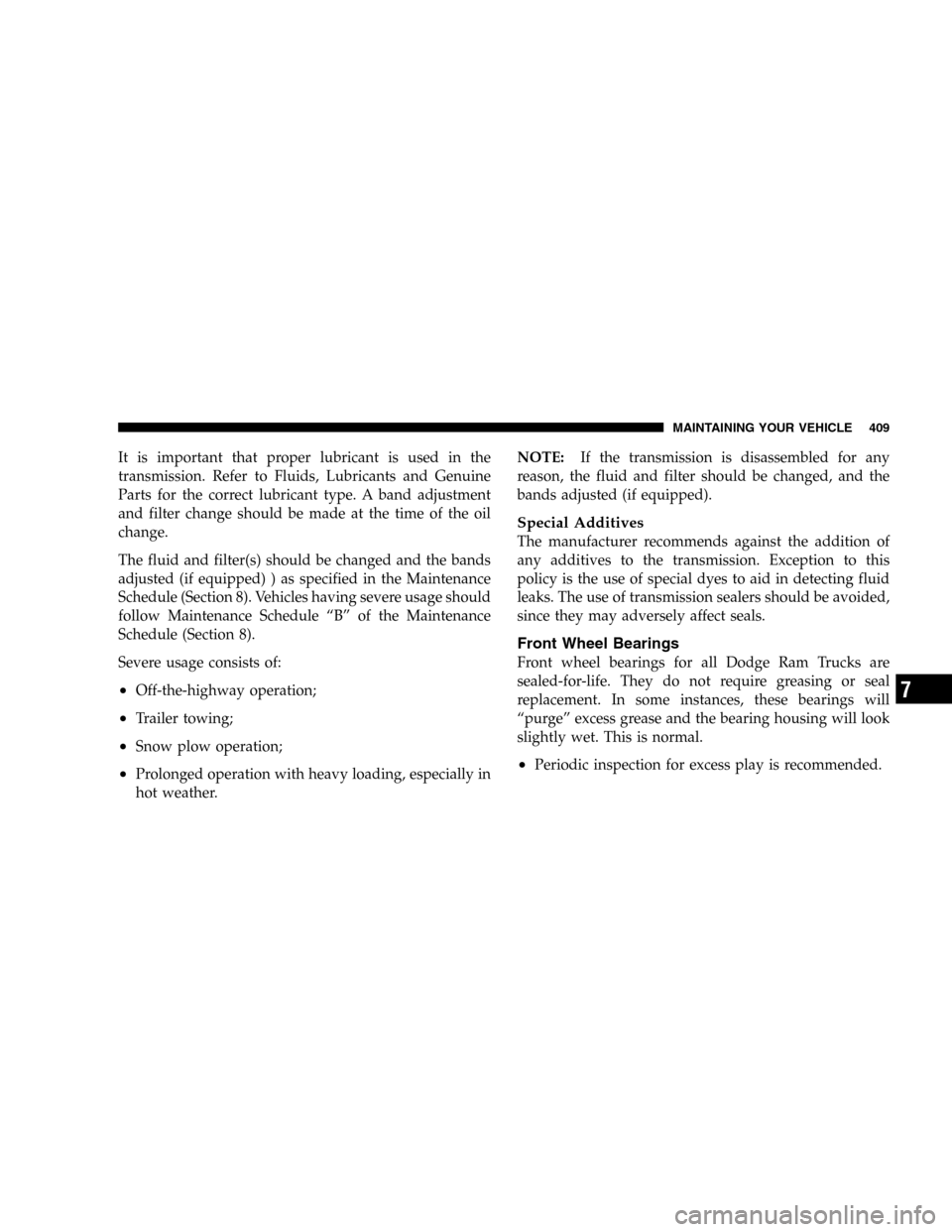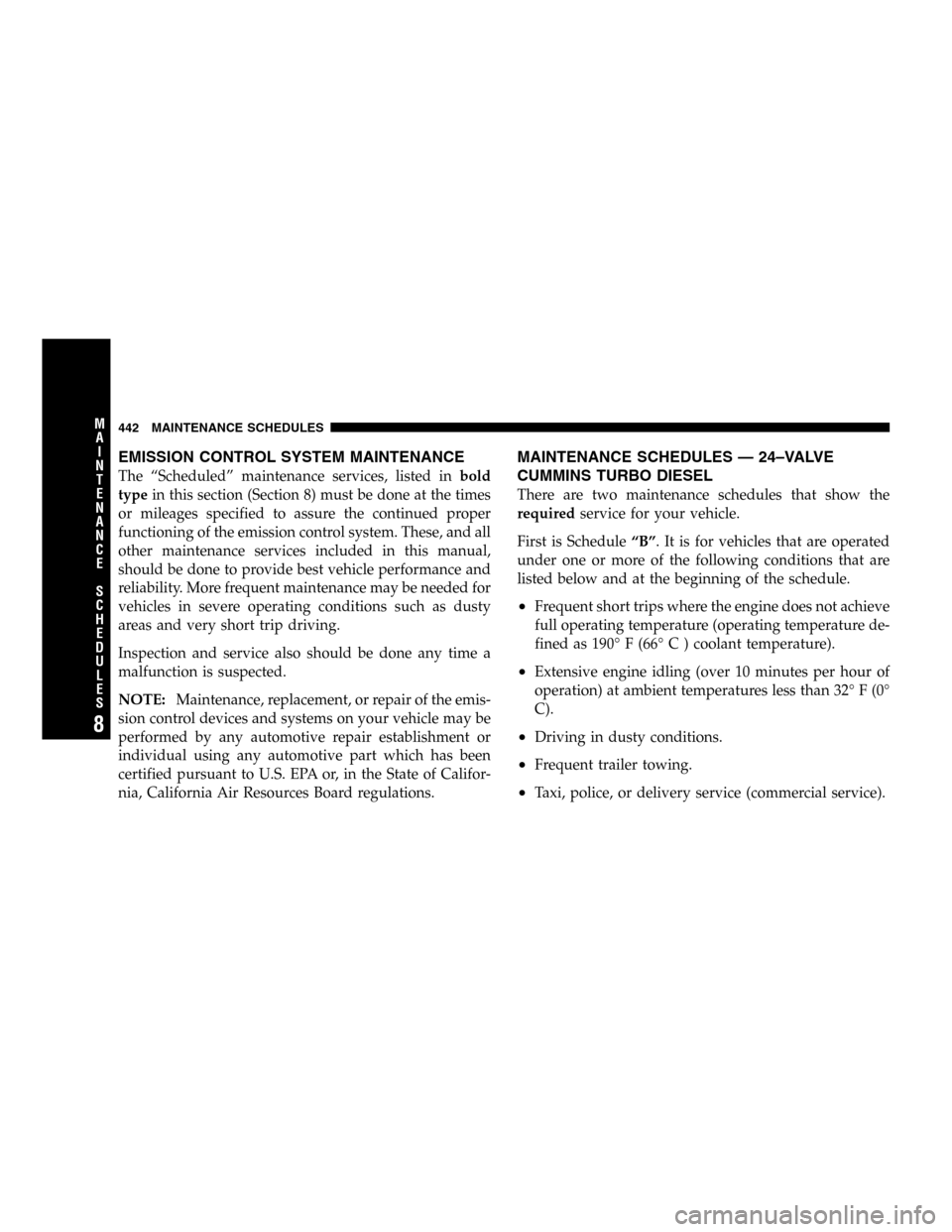Page 331 of 493
WARNING!
Do not connect trailer brakes to your vehicle’s hy-
draulic brake lines. It can overload your brake sys-
tem and cause it to fail. You might not have brakes
when you need them and could have an accident.
Towing any trailer will increase your stopping dis-
tance. When towing you should allow for additional
space between your vehicle and the vehicle in front
of you. Failure to do so could result in an accident.
Towing Requirements — Trailer Lights & Wiring
Whenever you pull a trailer, regardless of the trailer size,
stop lights and turn signals on the trailer are required for
motoring safety.
The Trailer Tow Package may includea4and7pin
wiring harness. Use a factory approved trailer harness
and connector.NOTE:Do not cut or splice wiring into the vehicles
wiring harness.
The electrical connections are all complete to the vehicle
but you must mate the harness to a trailer connector.
Refer to the following illustrations.
4 - Pin Connector
STARTING AND OPERATING 331
5
Page 332 of 493
Towing Tips
Before setting out on a trip, practice turning, stopping
and backing the trailer in an area away from heavy
traffic.If using a manual transmission vehicle for trailer towing,
all starts must be in FIRST gear to avoid excessive clutch
slippage.
Towing Tips — Automatic Transmission
The “D” range can be selected when towing. However, if
frequent shifting occurs while in this range, the “TOW
HAUL” or “OD/OFF” range should be selected.
NOTE:Using the “TOW HAUL” or “OD/OFF” range
while operating the vehicle under heavy operating con-
ditions will improve performance and extend transmis-
sion life by reducing excessive shifting and heat build up.
This action will also provide better engine braking.
The automatic transmission fluid and filter should be
changed if you REGULARLY tow a trailer for more than
45 minutes of continuous operation. See Schedule “B” in
section 8 of this manual for transmission fluid change
intervals.
7- Pin Connector
332 STARTING AND OPERATING
Page 334 of 493
Trailer Towing Mirrors — If Equipped
These mirrors are designed with an adjustable mirror
head to provide a greater vision range when towing
extra-wide loads. To change position inboard or out-
board, the mirror head should be rotated (flipped Out or
In). A small blindspot mirror is integrated onto the main
mirror surface.
NOTE: Fold the7x10inch trailer towing mirrors
rearward prior to entering an automated car wash.
CAUTION!
Do not attempt to fold the7x10inch trailer towing
mirrors forward. The7x10inch trailer towing
mirrors are not designed to be folded forward and
doing so will damage the mirrors and/or vehicle.
Blindspot Mirror
334 STARTING AND OPERATING
Page 335 of 493
SNOWPLOW
Snowplow Prep Packages are available as a factory
installed option. These packages include components
necessary to equip your vehicle with a snowplow.
NOTE:Before installation of a snowplow it is highly
recommended that the owner / installer obtain and
follow the recommendations contained within the cur-
rent Dodge BODY BUILDER’S GUIDE. See your dealer,
installer or snowplow manufacture for this information.
There are unique electrical systems that must be con-
nected to properly assure operator safety and prevent
overloading vehicle systems.
Trailer Towing Position
STARTING AND OPERATING 335
5
Page 381 of 493

•Driving in dusty conditions.
•Frequent trailer towing.
•Taxi, police, or delivery service (commercial service).
•Off-road or desert operation.
•Extensive operation at high engine speeds (greater
than 2900 rpm) and loads (greater than 70% throttle).
IfANYof these apply to you, then change your engine oil
at every interval shown in schedule�B�of the�Mainte-
nance Schedules�section of this manual.
If none of these apply to you, then change your engine oil
at every interval shown on schedule�A�of the�Mainte-
nance Schedules�section of this manual.
NOTE:Most vehicles are operated under the conditions
listed for Schedule�B.�
Engine Oil Selection
1. Engine Oil Quality
Use only oils conforming to API Ser-
vice CI-4. A sulfated ash limit is speci-
fied for lubrication oil used in Cum-
mins engines. Oils with a high ash
content may produce deposits on
valves that can progress to guttering
and valve burning. A maximum sul-
fated ash content of 1.85 mass % is recommended for all
oil used in the engine.
2. Engine Oil Viscosity (SAE Grade)
The proper SAE viscosity of engine oil for the expected
ambient temperature range should be selected, as indi-
cated in the following chart:
MAINTAINING YOUR VEHICLE 381
7
Page 409 of 493

It is important that proper lubricant is used in the
transmission. Refer to Fluids, Lubricants and Genuine
Parts for the correct lubricant type. A band adjustment
and filter change should be made at the time of the oil
change.
The fluid and filter(s) should be changed and the bands
adjusted (if equipped) ) as specified in the Maintenance
Schedule (Section 8). Vehicles having severe usage should
follow Maintenance Schedule “B” of the Maintenance
Schedule (Section 8).
Severe usage consists of:
•Off-the-highway operation;
•Trailer towing;
•Snow plow operation;
•Prolonged operation with heavy loading, especially in
hot weather.NOTE:If the transmission is disassembled for any
reason, the fluid and filter should be changed, and the
bands adjusted (if equipped).
Special Additives
The manufacturer recommends against the addition of
any additives to the transmission. Exception to this
policy is the use of special dyes to aid in detecting fluid
leaks. The use of transmission sealers should be avoided,
since they may adversely affect seals.
Front Wheel Bearings
Front wheel bearings for all Dodge Ram Trucks are
sealed-for-life. They do not require greasing or seal
replacement. In some instances, these bearings will
“purge” excess grease and the bearing housing will look
slightly wet. This is normal.
•Periodic inspection for excess play is recommended.
MAINTAINING YOUR VEHICLE 409
7
Page 421 of 493
Cavity Cartridge
FuseMini
FuseDescription
8 10 Amp
RedHeated Mirrors
9 30 Amp
PinkOff Road Module
Power
10 5 Amp
OrangeTrx-Off Rd Pkg Sen
(Gas Engine Only)
11 20 Amp
YellowIOD-CNN/Radio/
Under Hood Lamp/
WCM/SDARS/HFM
12 30 Amp
PinkElectric Brake
13 25 Amp
NaturalPower-Battery
RWAL/ABS Module
Feed
14 15 Amp
BluePark Lamps LeftCavity Cartridge
FuseMini
FuseDescription
15 20 Amp
YellowTrailer Park Lamps
16 15 Amp
BluePark Lamps Right
17 15 Amp
BlueSpare
18 40 Amp
GreenABS Pump
19 30 Amp
PinkTrailer Tow
20 10 Amp
RedORC2
21 10 Amp
RedORC Preset Carrier
22 2 Amp
GrayIGN Switch Feed
MAINTAINING YOUR VEHICLE 421
7
Page 442 of 493

EMISSION CONTROL SYSTEM MAINTENANCE
The “Scheduled” maintenance services, listed inbold
typein this section (Section 8) must be done at the times
or mileages specified to assure the continued proper
functioning of the emission control system. These, and all
other maintenance services included in this manual,
should be done to provide best vehicle performance and
reliability. More frequent maintenance may be needed for
vehicles in severe operating conditions such as dusty
areas and very short trip driving.
Inspection and service also should be done any time a
malfunction is suspected.
NOTE:Maintenance, replacement, or repair of the emis-
sion control devices and systems on your vehicle may be
performed by any automotive repair establishment or
individual using any automotive part which has been
certified pursuant to U.S. EPA or, in the State of Califor-
nia, California Air Resources Board regulations.
MAINTENANCE SCHEDULES — 24–VALVE
CUMMINS TURBO DIESEL
There are two maintenance schedules that show the
requiredservice for your vehicle.
First is Schedule“B”. It is for vehicles that are operated
under one or more of the following conditions that are
listed below and at the beginning of the schedule.
•Frequent short trips where the engine does not achieve
full operating temperature (operating temperature de-
fined as 190° F (66° C ) coolant temperature).
•Extensive engine idling (over 10 minutes per hour of
operation) at ambient temperatures less than 32° F (0°
C).
•Driving in dusty conditions.
•Frequent trailer towing.
•Taxi, police, or delivery service (commercial service).
442 MAINTENANCE SCHEDULES
8
M
A
I
N
T
E
N
A
N
C
E
S
C
H
E
D
U
L
E
S